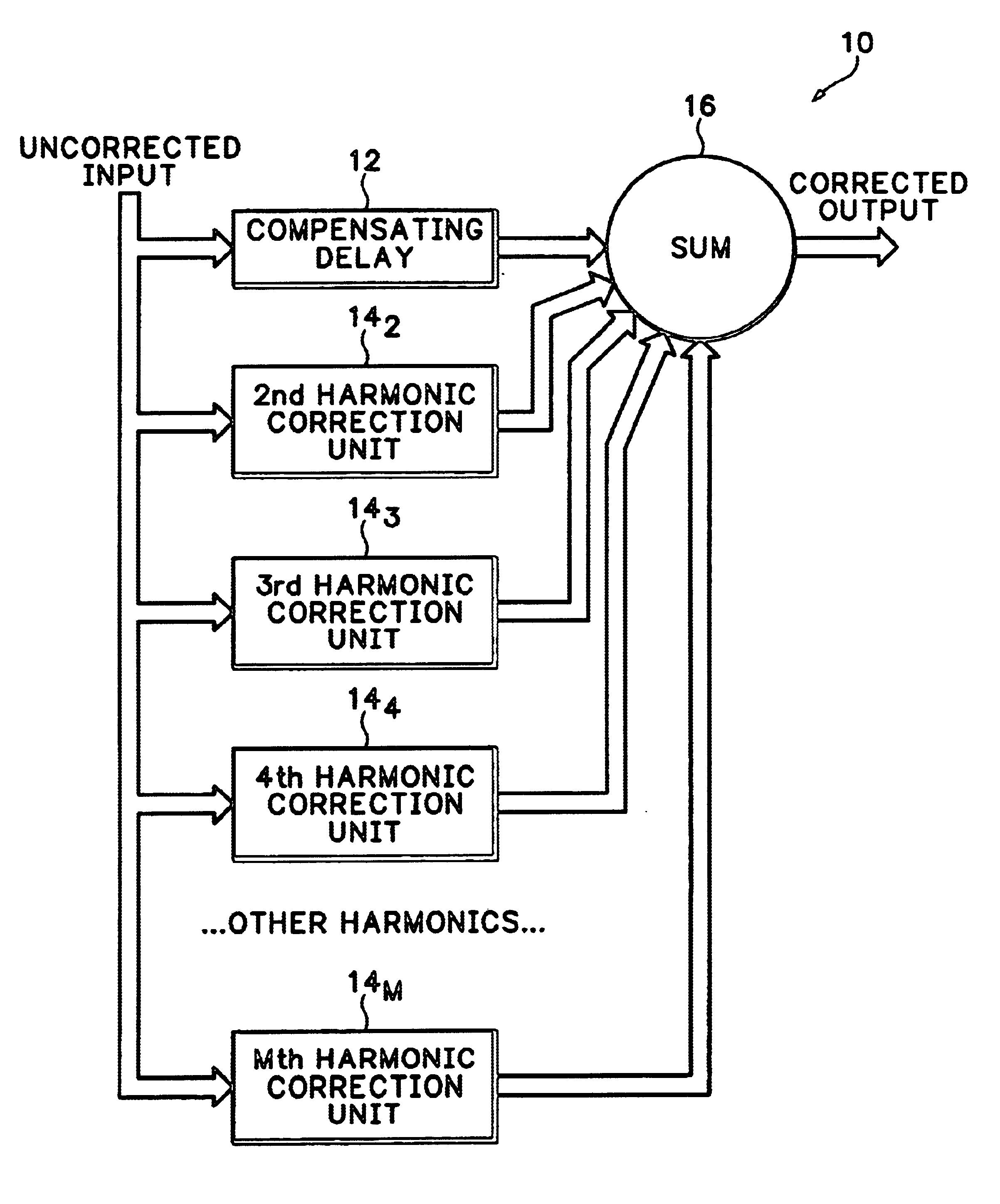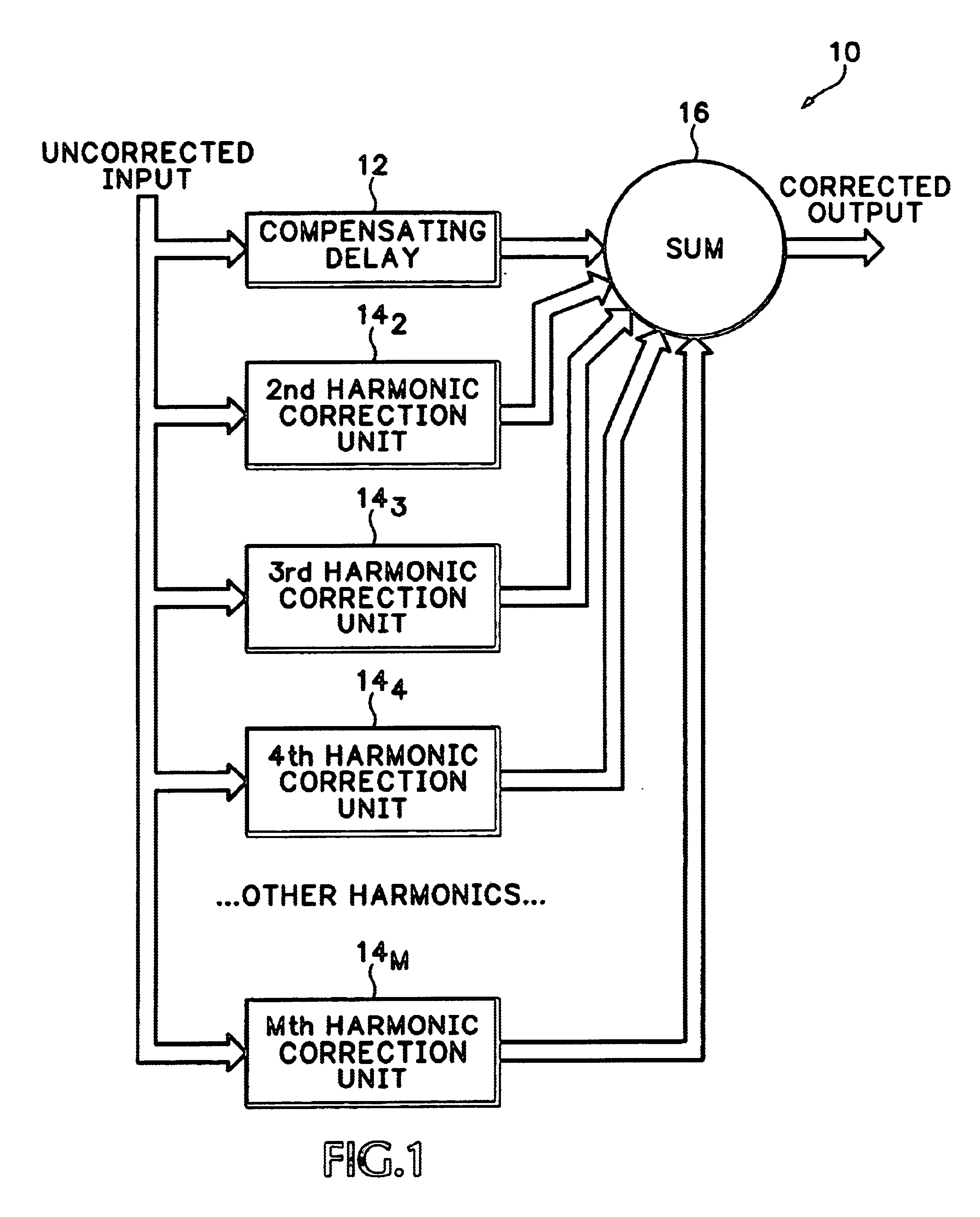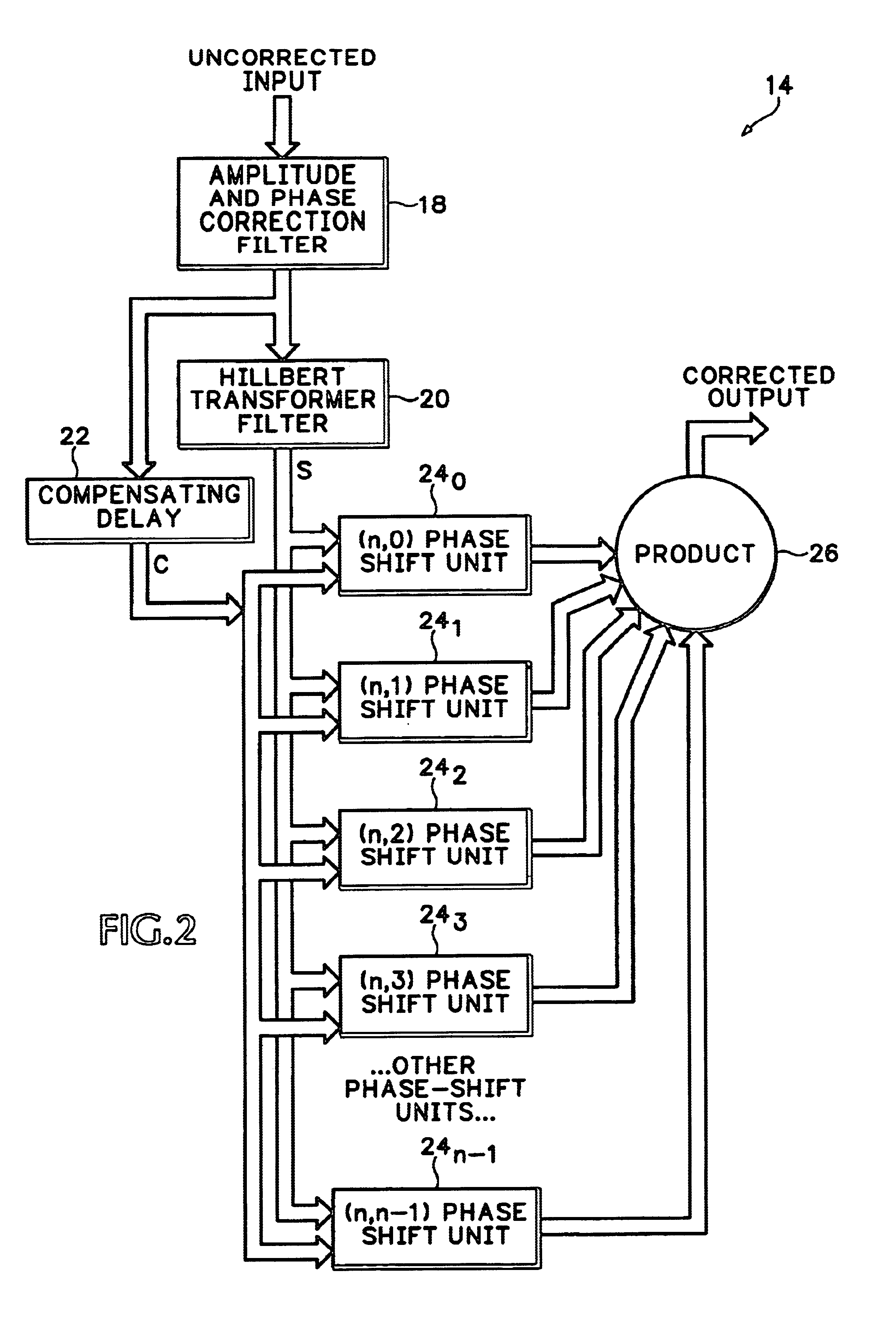Linearity compensation by harmonic cancellation
- Summary
- Abstract
- Description
- Claims
- Application Information
AI Technical Summary
Problems solved by technology
Method used
Image
Examples
Embodiment Construction
[0028]Self-modulating harmonic distortion mechanisms are based on the formation of a product of delayed versions of an input signal within a nonlinear system, such as a multi-stage ADC. It is difficult to infer the delays on each path of the input signal to this system. In the special case where they have the same phase, the above-described harmonic profile of the prior art is appropriate. In actual systems any combination of phases is possible. In another particular case a set of evenly spaced phase relationships produce only the desired harmonic. This has the advantage that each harmonic may be independently calibrated for cancellation. The disadvantage is that some additional processing is involved. The present invention uses the following product over evenly spaced phase shifts on the assumption that delays map to phase shifts if the sample clock rate is not changed between calibration and operation:
sin(n,ωt)=2n−1Πk=0→n−1sin(ωt+kπ / n)
Using a trigonometric expansion, this becomes...
PUM
 Login to View More
Login to View More Abstract
Description
Claims
Application Information
 Login to View More
Login to View More - R&D
- Intellectual Property
- Life Sciences
- Materials
- Tech Scout
- Unparalleled Data Quality
- Higher Quality Content
- 60% Fewer Hallucinations
Browse by: Latest US Patents, China's latest patents, Technical Efficacy Thesaurus, Application Domain, Technology Topic, Popular Technical Reports.
© 2025 PatSnap. All rights reserved.Legal|Privacy policy|Modern Slavery Act Transparency Statement|Sitemap|About US| Contact US: help@patsnap.com



